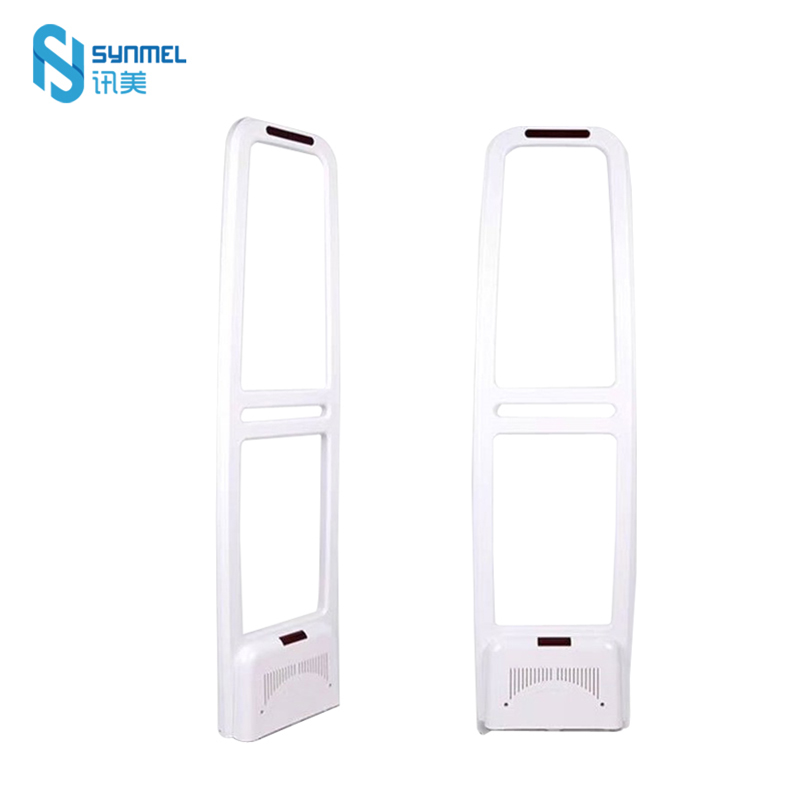- English
- Español
- Português
- русский
- Français
- 日本語
- Deutsch
- tiếng Việt
- Italiano
- Nederlands
- ภาษาไทย
- Polski
- 한국어
- Svenska
- magyar
- Malay
- বাংলা ভাষার
- Dansk
- Suomi
- हिन्दी
- Pilipino
- Türkçe
- Gaeilge
- العربية
- Indonesia
- Norsk
- تمل
- český
- ελληνικά
- український
- Javanese
- فارسی
- தமிழ்
- తెలుగు
- नेपाली
- Burmese
- български
- ລາວ
- Latine
- Қазақша
- Euskal
- Azərbaycan
- Slovenský jazyk
- Македонски
- Lietuvos
- Eesti Keel
- Română
- Slovenski
- मराठी
- Srpski језик
How to choose EAS anti-theft system?
Electronic goods anti-theft system, also known as EAS system, is a security protection measure widely used in various large-scale industries. How to choose the most suitable EAS solution to achieve the best anti-theft effect and cost-effectiveness?
Generally speaking, the following eight factors need to be considered when choosing an EAS system.
1. Detection rate
Refers to the average detection rate of non-degaussed tags in all directions in the detection area, which is a performance indicator to measure the reliability of the EAS system. A higher detection rate means that the system is more reliable, and a lower detection rate usually means that the system will have a higher false alarm rate.
2. The false alarm rate
Tags from different EAS systems often cause false alarms. Labels that are not demagnetized correctly can also cause false positives. If the false positive rate is too high, it will be difficult for employees to intervene in security incidents, which will also affect the customer's consumer experience. Although false alarms cannot be eliminated 100%, in order to improve the overall performance of the EAS system, the false alarm rate should be reduced to the greatest extent.
3. Anti-interference ability
Interference will cause the detection system to automatically issue an alarm or reduce the detection rate of the device, which is usually not related to anti-theft tags. This situation may occur in the case of power failure or excessive environmental noise. Radio frequency systems are particularly susceptible to such environmental interference. Electromagnetic systems are also susceptible to environmental interference, especially magnetic fields.

4.Shield
The shielding effect of metal will interfere with the detection of security tags. This role includes the use of metal items, such as products wrapped in metal foil and metal products, and even metal shopping carts and shopping baskets will also shield the security system. Radio frequency systems are particularly susceptible to shielding, and large metal objects can also affect electromagnetic systems. The acoustomagnetic EAS system is generally only affected by all-metal commodities, such as cookware, because it uses low-frequency magnetoelastic coupling, which is very safe for most other commodities.
5. Strict security and smooth flow of people
A robust EAS system needs to take into account the security needs of the store and the requirements of retail flow. Over-sensitive systems affect shopping mood, while under-sensitive systems reduce the profitability of the store.
6. Protect different types of commodities
Retail products can generally be divided into two categories. One category is soft goods, such as clothing, footwear, and textile goods, which can be protected by reusable EAS hard tags. The other category is hard goods, such as cosmetics, food and shampoo, which can be protected by EAS disposable soft labels.
7. EAS soft labels and hard labels-applicability
EAS soft and hard tags are an indispensable part of any EAS system. The performance of the entire security system also depends on the correct and proper use of the tags. It is important to note that some labels are easily damaged by moisture and some cannot be bent. In addition, some labels can be easily hidden in a box of goods, while others will affect the packaging of the goods.
8. EAS buckle and demagnetizer
In the entire security link, the reliability and convenience of the EAS buckle and demagnetizer are also an important factor. Advanced EAS degaussers use non-contact degaussing to maximize cash register efficiency and speed up the passage of cash register channels.



